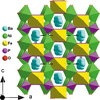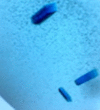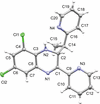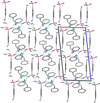
- AfCA collection
- research communications
- feature articles
- research papers
- research communications
- AfCA collection
- research communications
- organic compounds
- research communications
- organic compounds
- metal-organic compounds
- research communications
- organic compounds
- metal-organic compounds
- organic compounds
issue contents
AfCA collection
Celebrating work published by African researchers in IUCr journals
Edited by Susan Bourne, Delia Haynes and Michele Zema
To commemorate the founding of the African Crystallographic Association and also to mark the 75th anniversary of the IUCr, we are publishing a special collection of articles from African researchers, which will provide a valuable and visible endorsement of the development of crystallography in Africa. We also hope to include a few articles about outreach activities for the development of crystallography in Africa. Articles will be added to the collection during 2023 and 2024.

research articles
JUAMI, the joint undertaking for an African materials institute, is a project to build collaborations and materials research capabilities between PhD researchers in Africa, the United States, and the world. Focusing on research-active universities in the East African countries of Kenya, Ethiopia, Tanzania and Uganda, the effort has run a series of schools focused on materials for sustainable energy and materials for sustainable development.




 access
access







 access
access

 access
access















































 access
access

 access
access









 access
access

 access
access

 access
access

 access
access

 access
access

 access
access

 access
access





 access
access

 access
accesstrans-Bis[bis(diphenylphosphanyl)methane-κ2P,P′]dichloridoruthenium(II): a triclinic polymorph


 access
access

 access
access
 menu
menu




































































